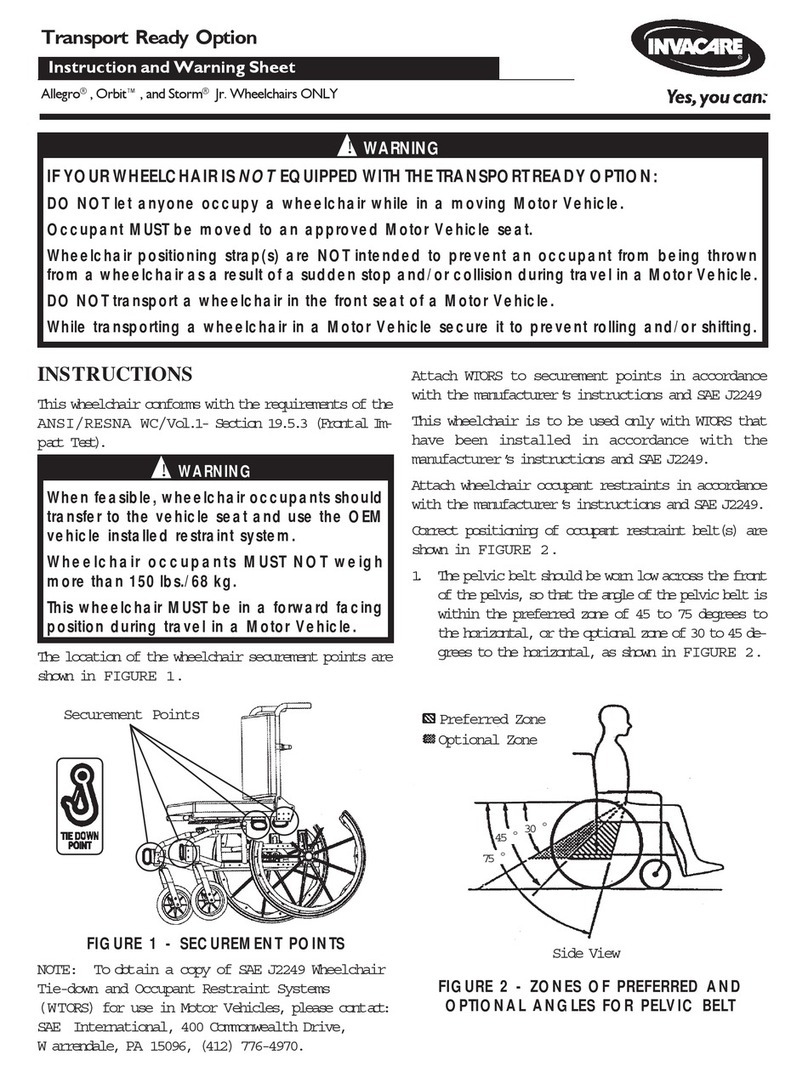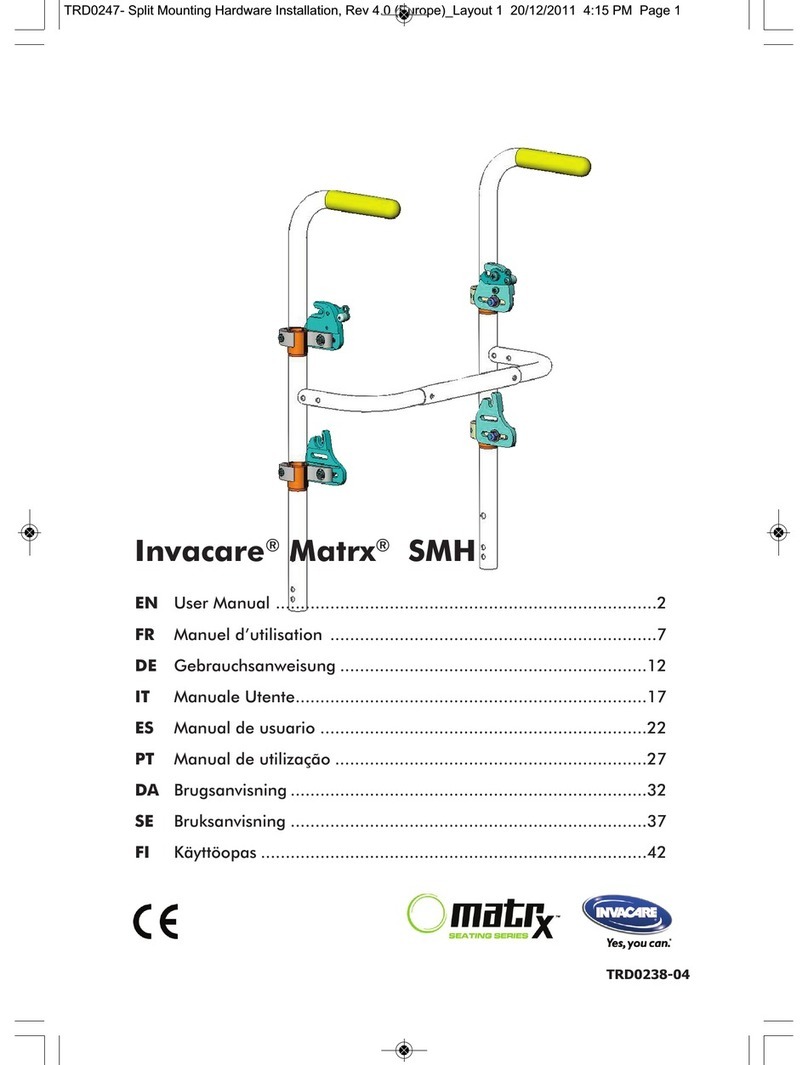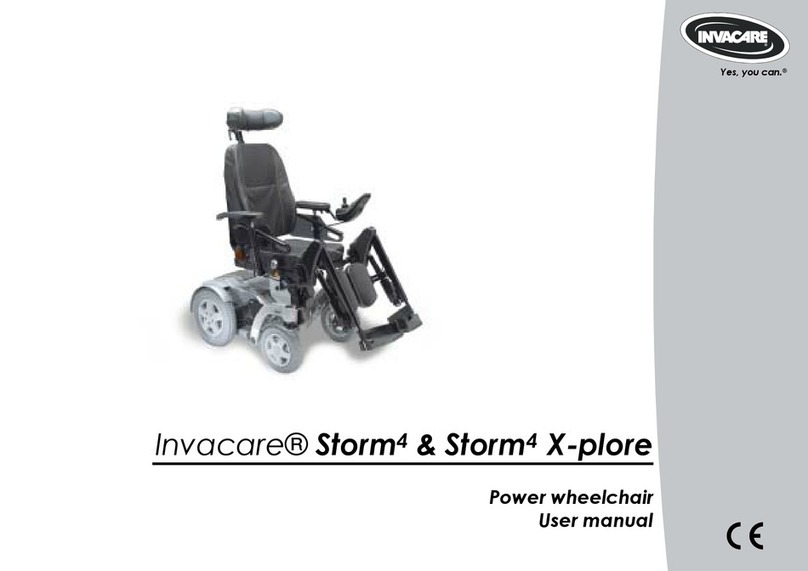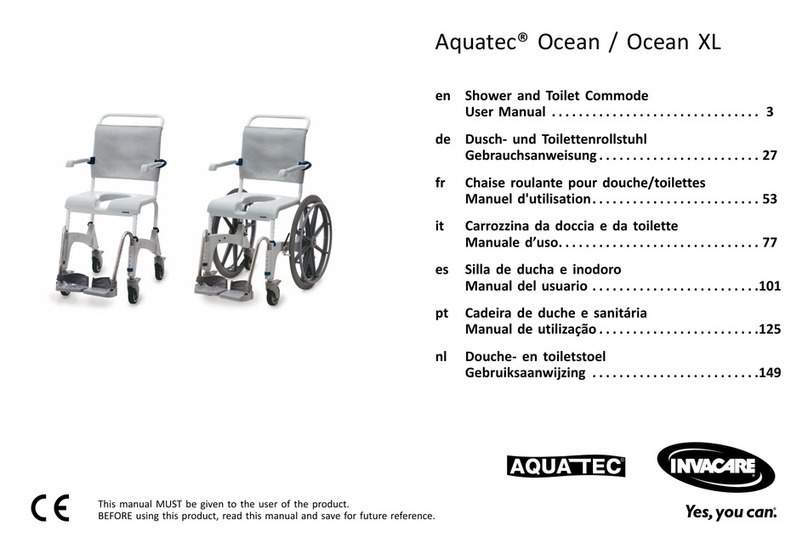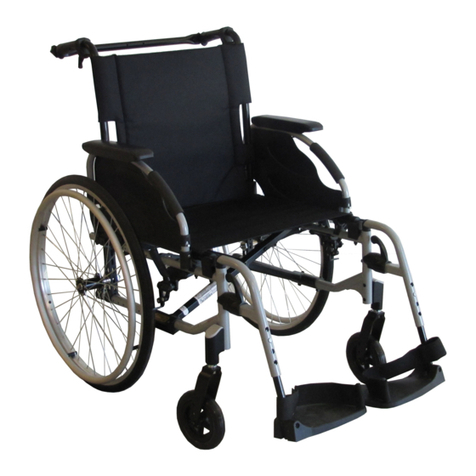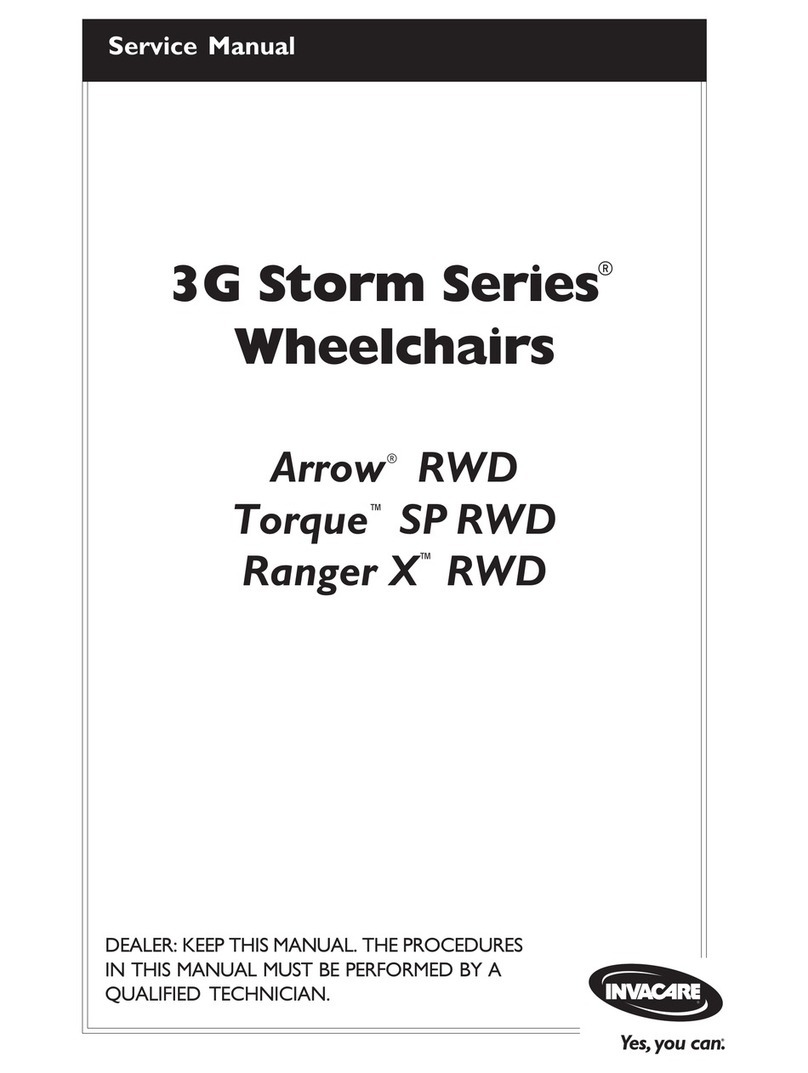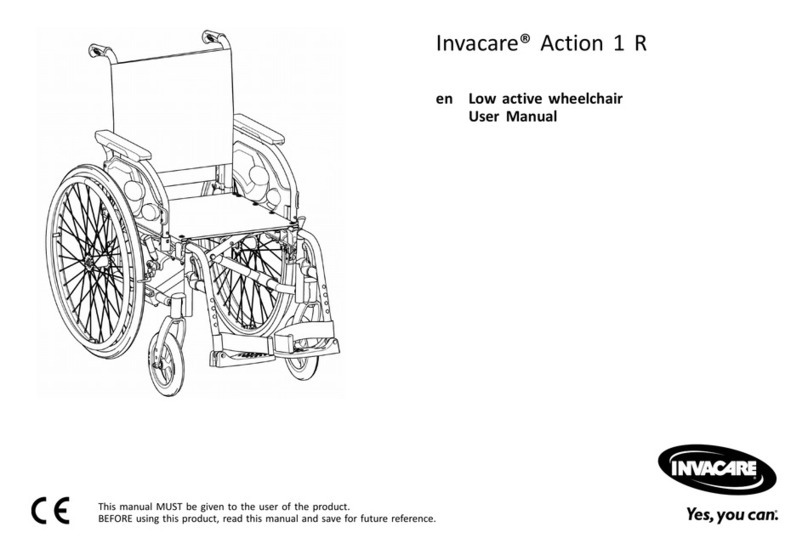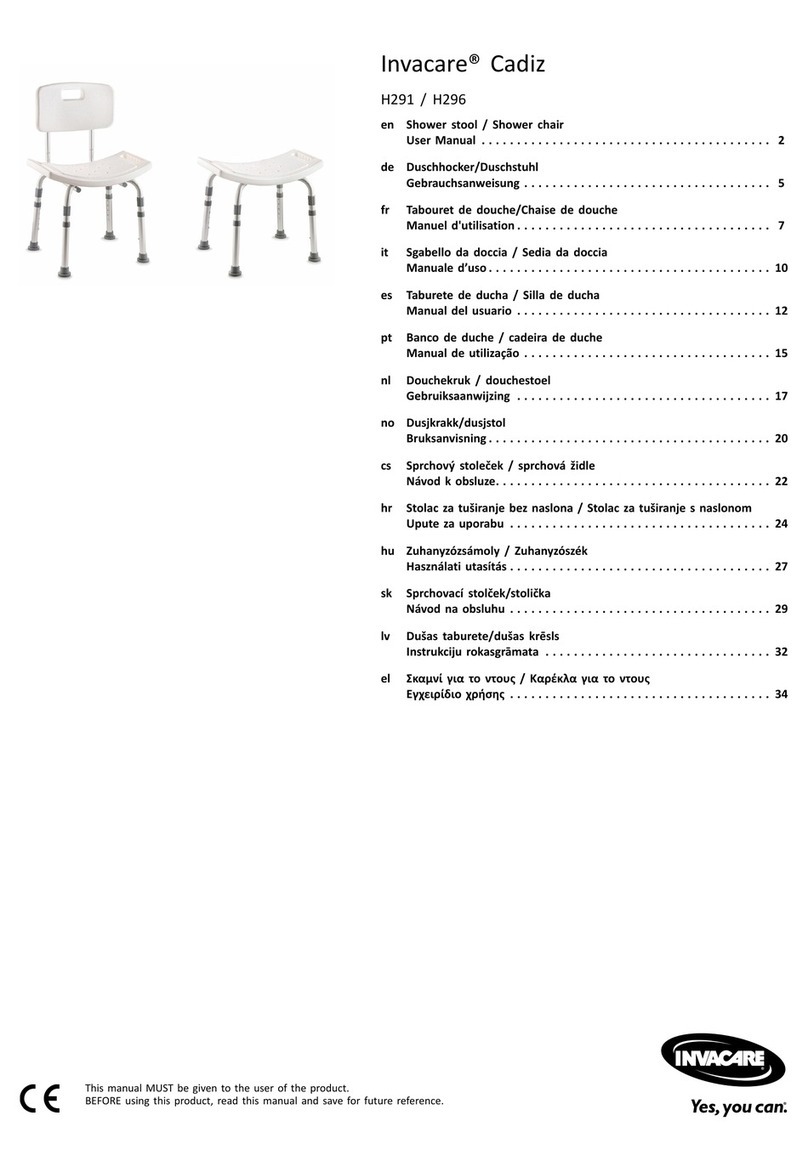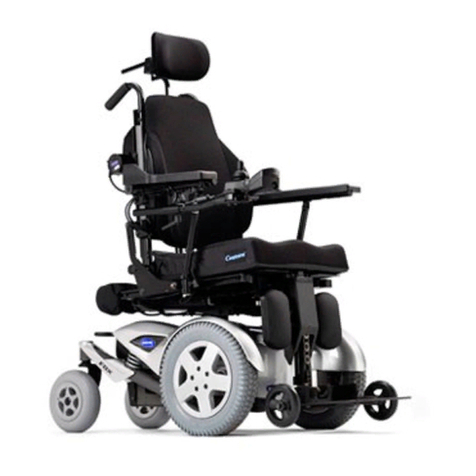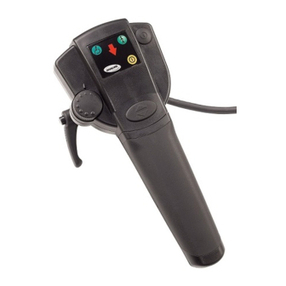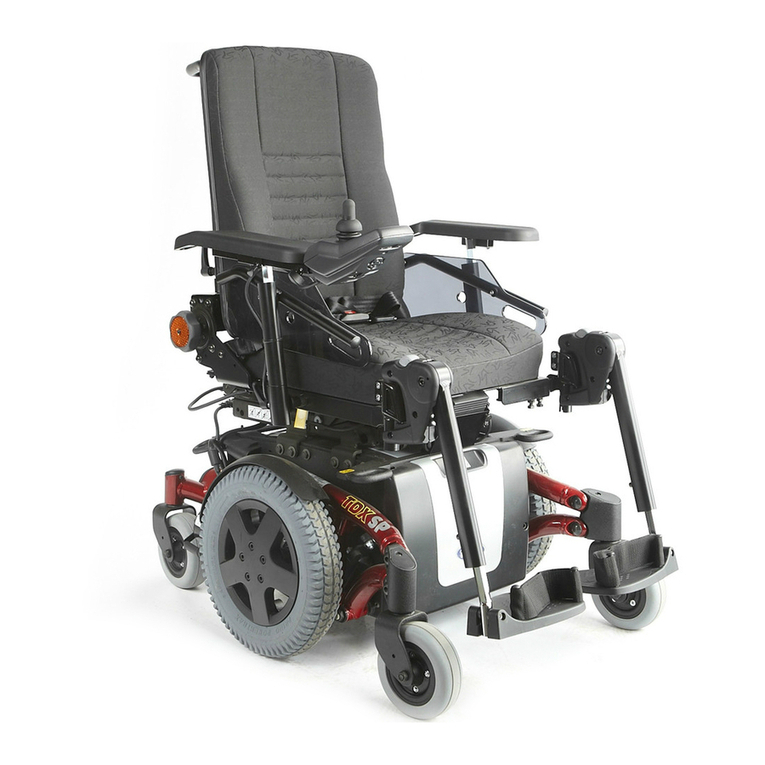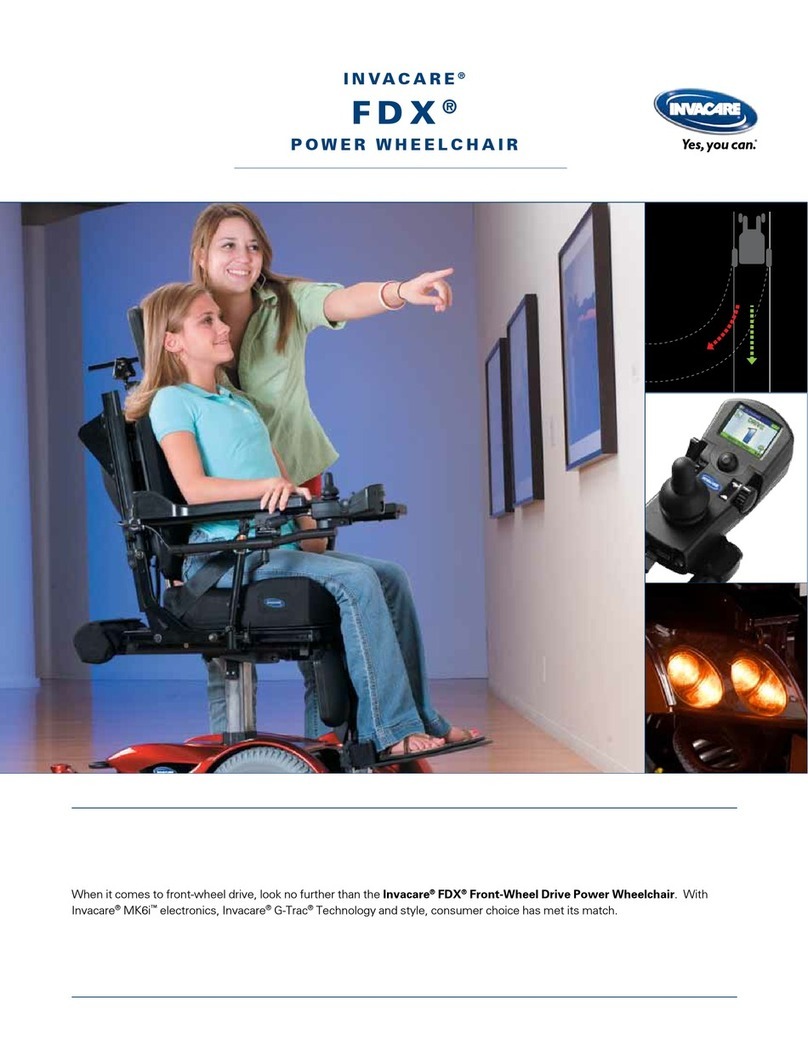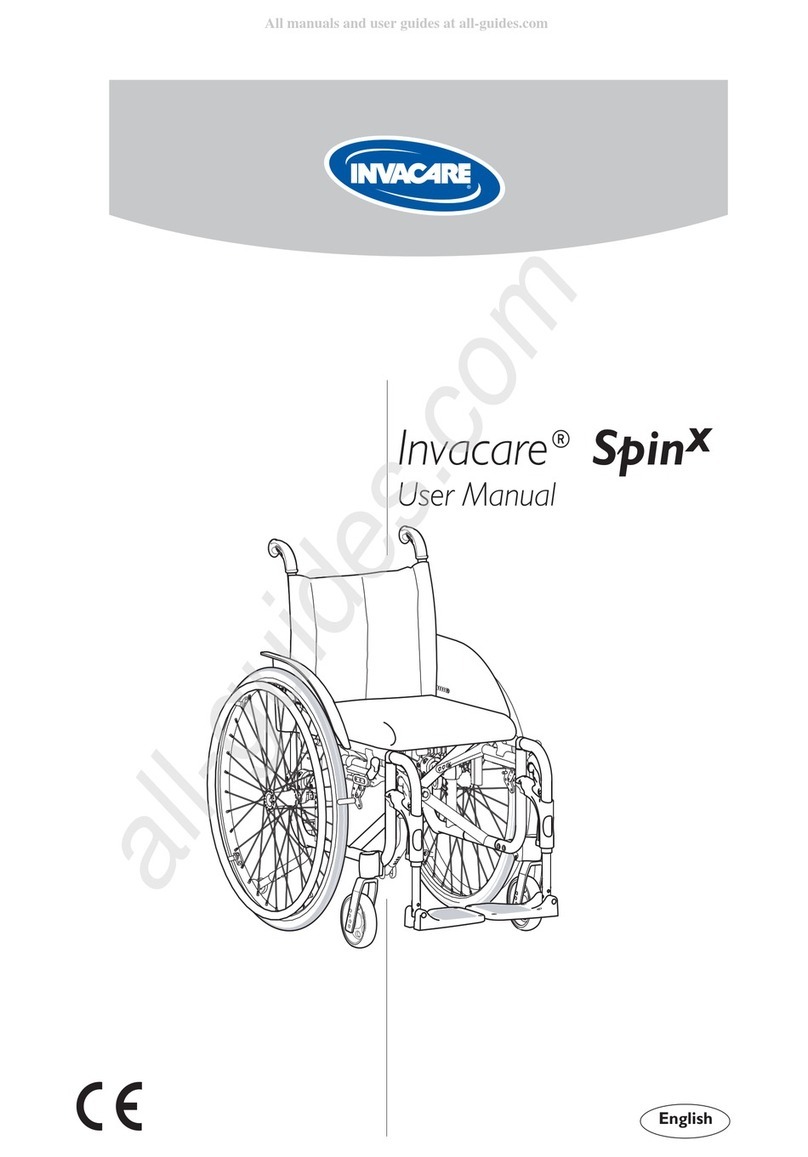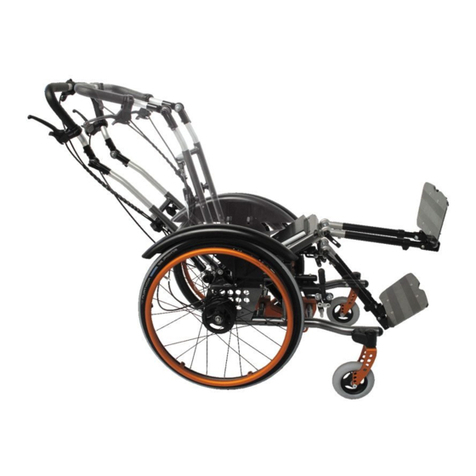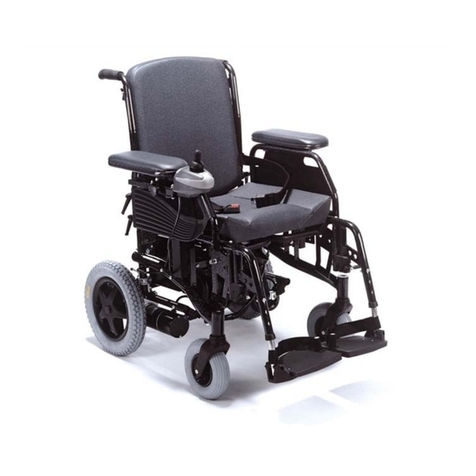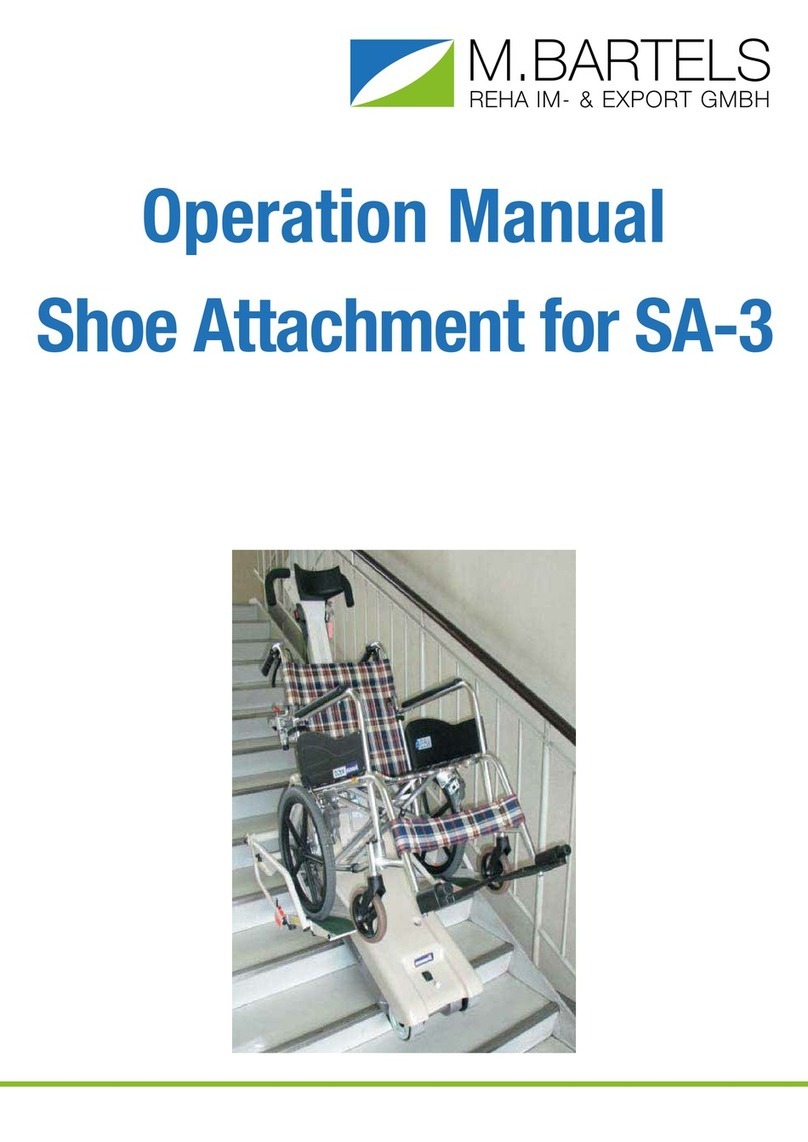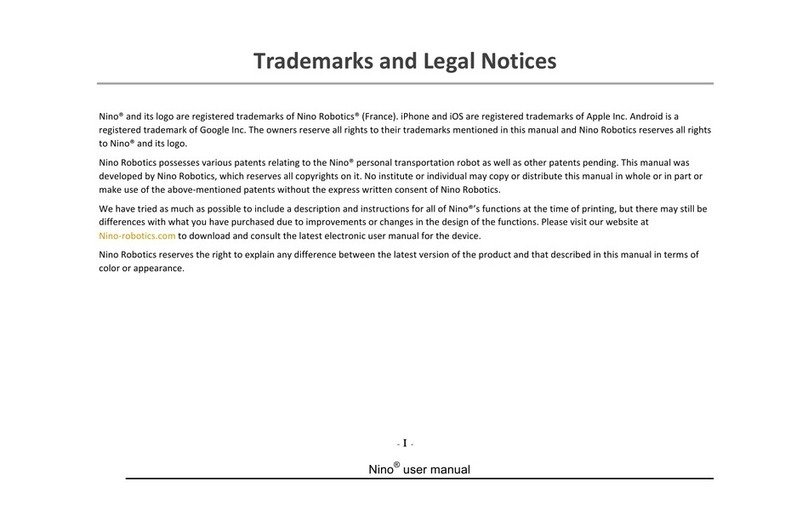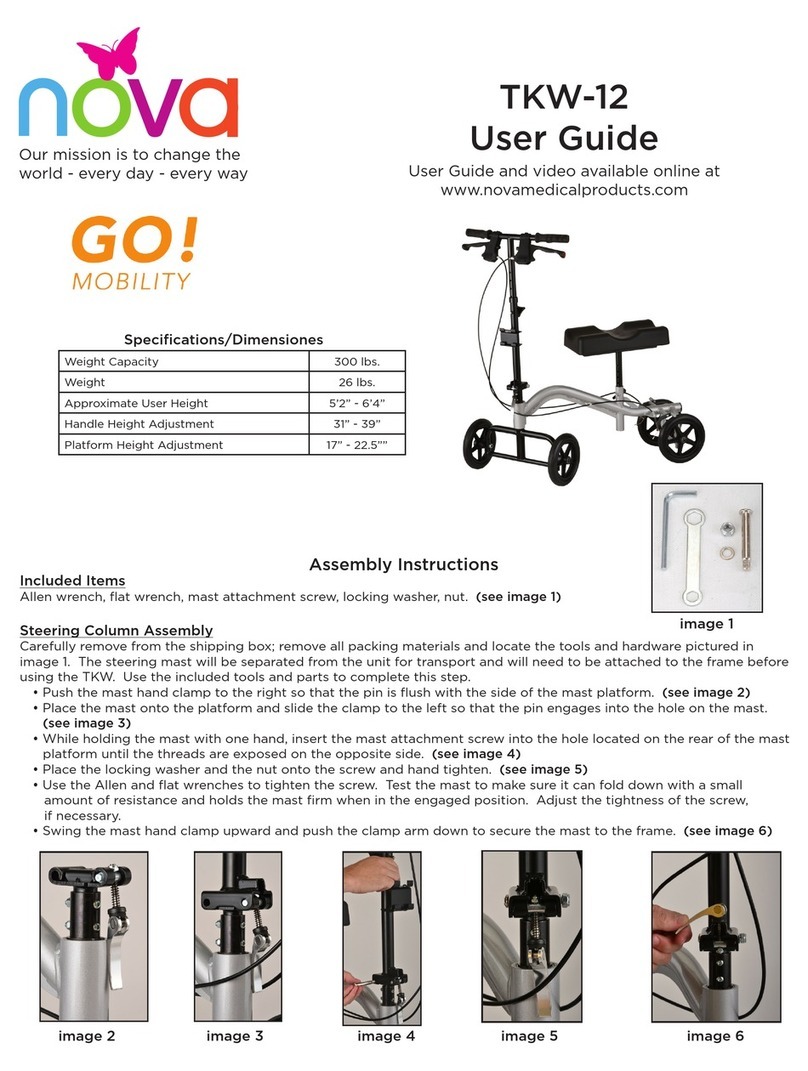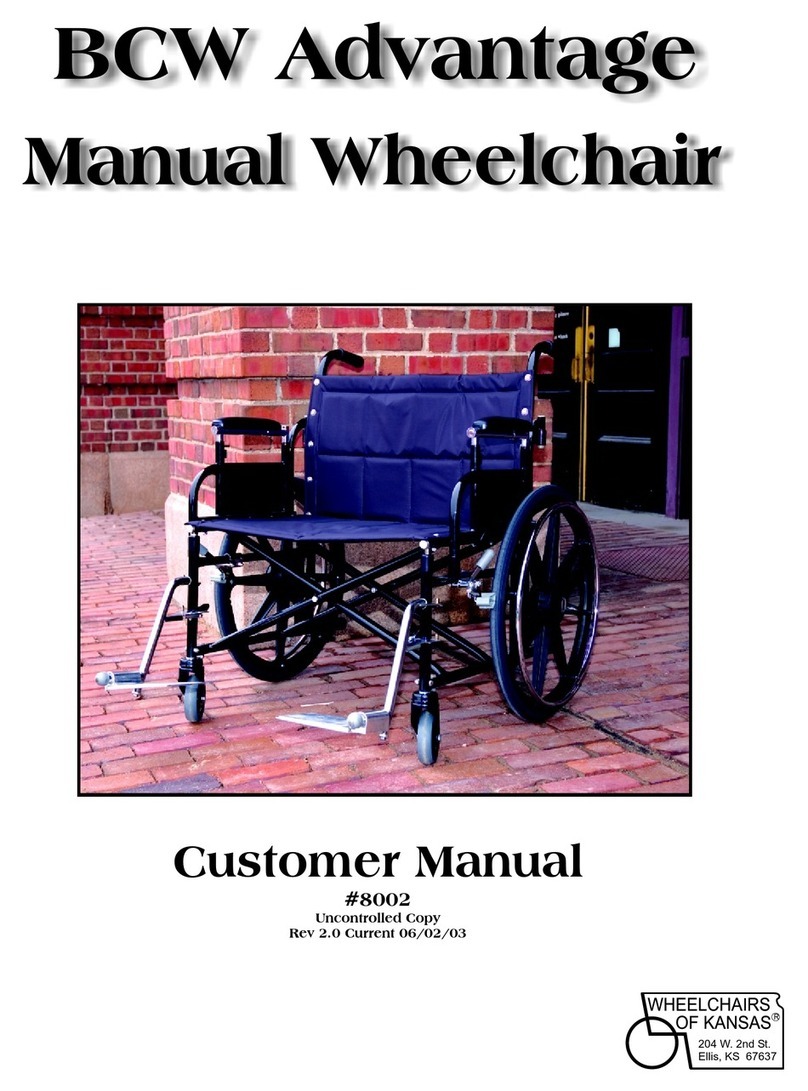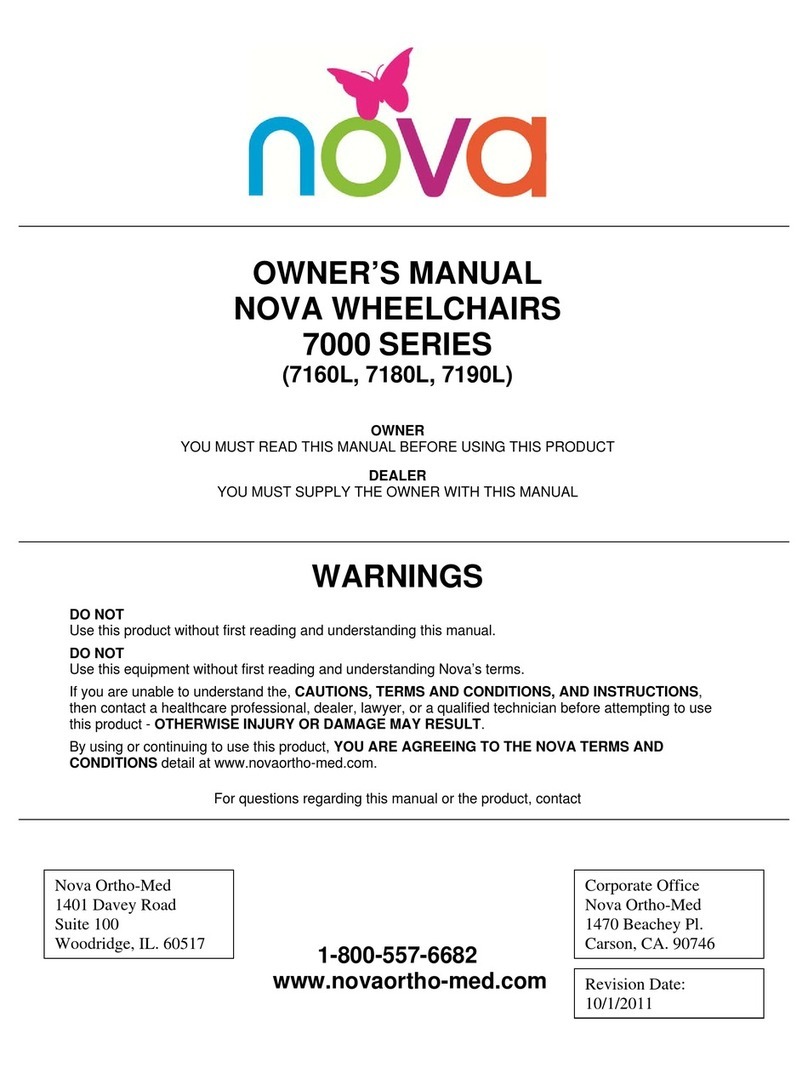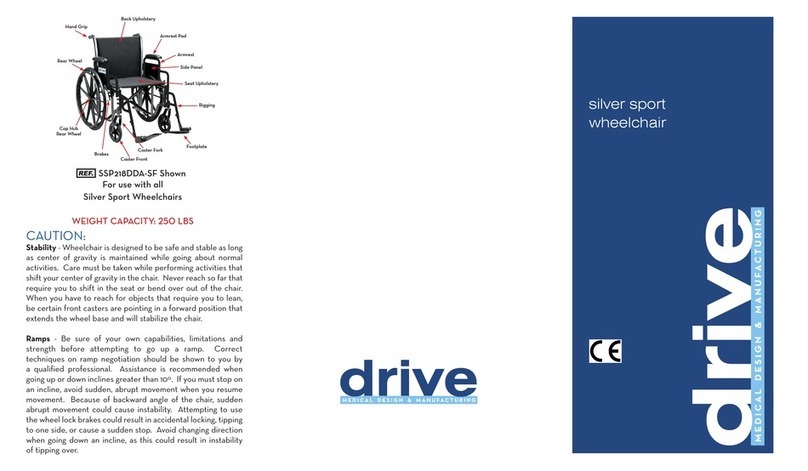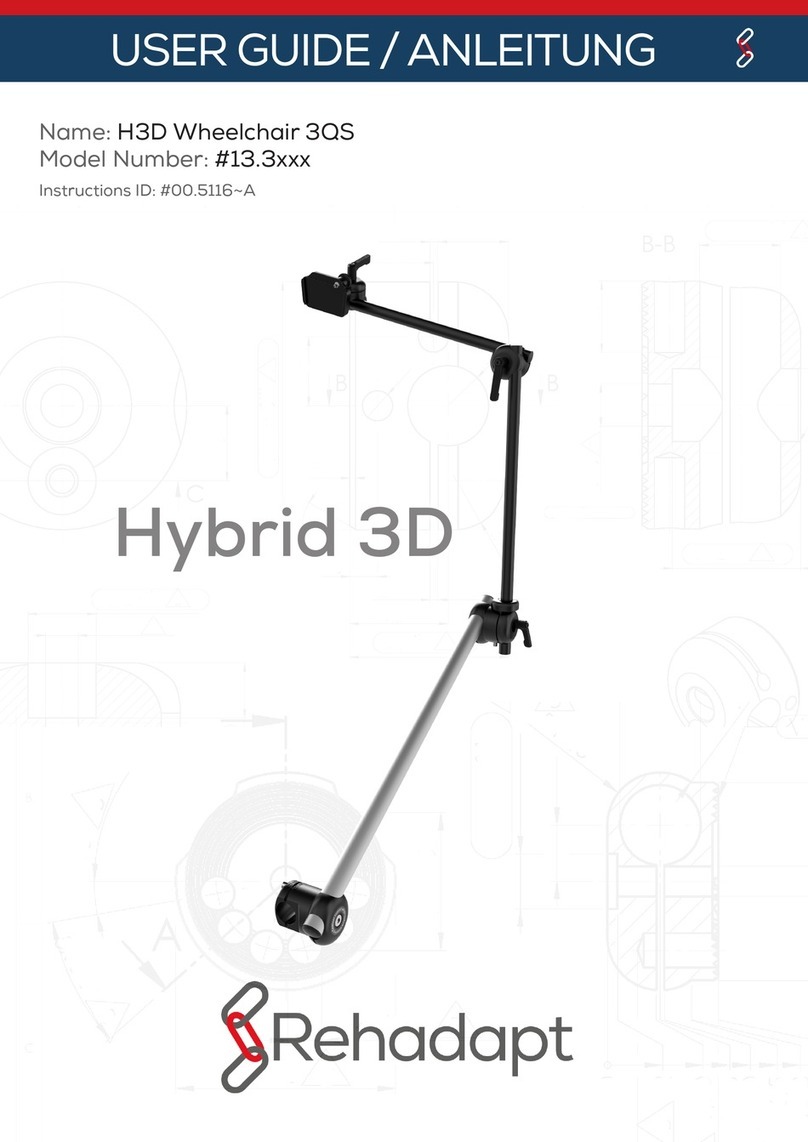
1.3 Tilting (balancing on the rear wheels)
For greater safety, this operation must be performed by an
attendant. The attendant should be aware of the required
physical effort and use appropriate positioning in order to
relieve the strain on his/her back (keep a straight back and
bend knees during this operation).
To tilt the wheelchair, the attendant must rmly grab the han-
dles making sure both are properly xed. The attendant must
warn the occupant in the wheelchair before tilting it and
remind him/her to lean backwards and make sure that both
feet and hands of the occupant are clear of the wheels.
Place a foot on the footstep tube and move continuously
until the chair reaches the equilibrium point. At this stage, the
assistant will feel a difference in weight distribution, which
usually occurs at approximately 30°. At this point, the
wheelchair can get over the obstacle easily.
Finally, the attendant slowly and gradually lowers the front
down to the ground, while rmly holding the handles.
Warning :
- Be aware of detachable parts such as armrests or legrests :
they must NEVER be used as lifting supports as they may be
inadvertedly released, resulting in possible injury to the user
and / or attendant.
- Do not lower the wheelchair suddenly, as this may result in
injury of the user.
To get onto the footpath:
- Method 1 (gure 11)
The attendant positions the wheelchair in front of the
footpath facing forward. Attendant tilts the wheelchair
backwards until the castors reach the footpath; attendant
pushes the wheelchair forward until the rear wheels are
against the kerb and again pushes the wheelchair until the
rear wheels climb over the kerb.
- Method 2 (gure 12)
In this case, the attendant stands on the footpath and
moves the wheelchair in a backwards position with the rear
wheels against the kerb. The attendant tilts the wheelchair
backwards until it is balanced and pulls the wheelchair with a
steady movement until the rear wheels climb over the kerb;
then he / she lowers the castors, while making sure that the
chair is far enough on the pavement so that the castors do
not fall into empty space.
